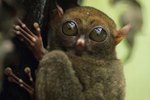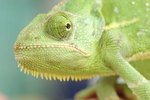
Owls are elusive and mysterious creatures. With a few exceptions, they prefer to soar through the skies hunting their prey, at night, and alone. Among their most striking features are their large, forward-facing eyes -- perhaps the most important tools owls have. Just as humans have eyelashes to protect their eyes from debris and other dangers, owls have sensitive hairs to protect against eye damage, too.
Being an Owl
With 216 confirmed species of owl, some variety in anatomy and morphology exists. Only 16 of these fall into the barn owl category, while the rest are considered "typical owls." Barn owls are medium-sized; they reside on all continents except Antarctica. As nocturnal predators, they possess excellent low-light vision and generally move around alone or in pairs. Because of their acute eyesight and hearing, and their silencing feathers, they are able to approach prey virtually undetected. Typical owls have many similar attributes, though they are larger with even bigger, elongated eyes for hunting nighttime prey. Many larger typical owls are adept enough to count foxes and deer among their prey.
Owl Sight
Both barn owl eyes and typical owl eyes are unique in their ability to handle extremely low light conditions. Unlike many other diurnal organisms, such as humans and other birds, owls possess significantly more rods -- light-seeking receptors -- than cones, in their eyes. In addition, the retinas are significantly larger, allowing for a greater interaction between eye and brain when forming images of what is being seen. However, owls cannot see in complete darkness, as has been thought. Whether or not they possess color vision is in dispute.
Owl Lashes
Many owl species, such as the great horned owl and other members of the genus Bubo, do have a form of eyelashes similar to those on mammal species. Simplified adaptations of feathers, they not only serve to protect the eyes from debris and dirt that may enter in flight but also assist in sensory perception. Anatomically, these bristles are stiff, tapered main feather shafts with minimal secondary barbs on each.
A Little Extra
Many birds do not have eyelashes -- morphologically, they are a little different than owls. Not only do owls have forward-facing eyes, so they must rotate their heads up to 270 degrees in order to utilize peripheral vision, they also blink differently. Most birds pull the bottom eyelid up, perhaps reducing the need for an eyelashes' sweeping action, while owls blink much like human beings.
References
Resources
Photo Credits
-
Jupiterimages/liquidlibrary/Getty Images
Writer Bio
Working with both small animals and exotics, Pamela Meadors has devoted more than 15 years to the veterinary field. She possesses a bachelor's degree in biological sciences and is the proud mom of a blind hedgehog.




